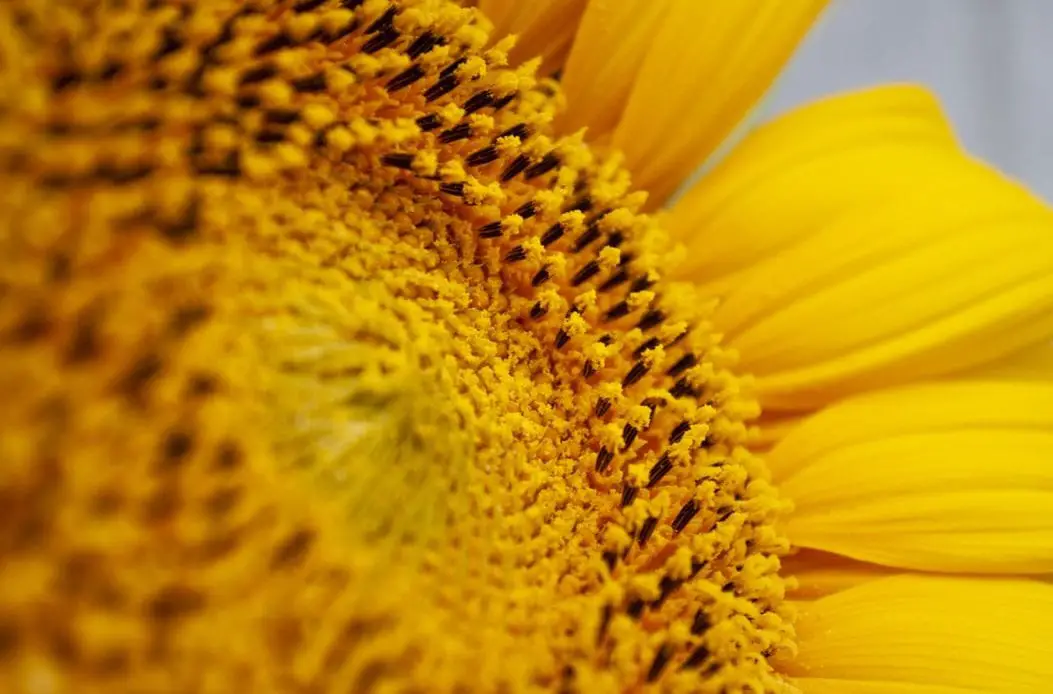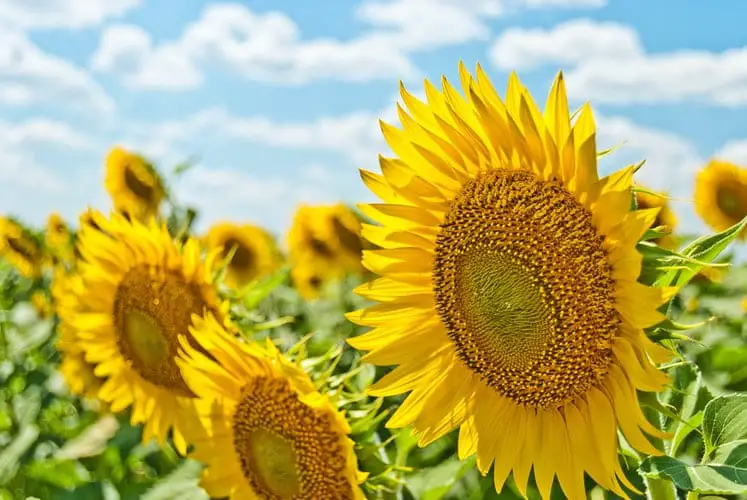
Home gardeners are increasingly growing sunflowers. They are beautiful and easy to grow, and can make a valuable addition to any garden with their stunning large flower heads. These flowers, as against the belief of several people, are not single blooms. They are a group of hundreds and thousands of flowers that combine to form a large seed head. Sunflowers are lovely to watch during summer and if you are dreaming about harvesting sunflower seeds after the season, you need to know some quick tips. This is because these seeds are not only the favorite of humans but much liked by mice, birds, squirrels and many others too.
The harvesting season is when you, as a gardener, are going to enjoy the most. This is the time when you reap the fruits of your hard work. Sunflowers are gorgeous and enhance the curb appeal of your home and garden. Their seeds are amazing harvests. While beans and tomatoes grow haphazard, sunflowers follow an order. Their seeds are tightly packed and are a real treat to the eye while their taste provides a fabulous experience for the tongue. These lovely tall plants, besides making your garden splendid, provide shade for the other small plants around. This article talks in depth about sunflower seeds and harvesting them.
Understand When Sunflowers Can Be Harvested
- Sunflowers are pretty easy to understand. But for some, growing and working with sunflowers seems like a mystery. This happens especially if you are unaware of the sunflower variety you are growing. Do not worry. Most sunflowers are similar when it comes to harvesting. If you are a starter, you should keep observing the sunflowers. The first signs that tell they are ready to be harvested are the dying petals and the fading seed head. Yes, the bright colorful petals wither and the seed head turns brownish. The seed also becomes visible, their color often changing to tan seed color. This is when they can be harvested.
- To be precise, over 50 percent of the beautiful yellow petals should have fallen before you begin the harvest process. The flower head should have begun to droop, facing the ground. Sunflowers during this stage appear dead, but take note, they are utmost healthy and drying perfectly well if they have seeds on the inside. These seeds should be hard and plump. Watch out for the garden intruders though. Sunflower seeds, as said earlier, are the favorite of birds and insects too. Harvesting sunflower seeds requires a bit of skill as well.
- There’s something important you should know. To harvest the sunflower seeds, the flower head must be fully dry. Otherwise, the seeds cannot be efficiently obtained from the flower. The sunflower will reach this state naturally within a few days of the flower starting to wilt, you need not make any extra effort.
- The back of the sunflower, called the calyx, is another part you should observe. This part is bright green when the sunflower grows but once it is fully ripe, it turns to brownish-yellow. This is a clear indication that the sunflower is no more sending energy to the seed head. Harvesting can be done anytime the calyx changes its color. Actually, the seed heads can be left on the stalks to dry naturally, but doing so might attract rodents and other animals to your favorite crop. You should be quick to collect the crop.
- You need to have patience if the petals are fresh and attached. You should also wait if the seeds are immature and still white and the back of the flower is green.
Before the Harvest Process
- With a yarn or twine, tie a paper bag loosely on the flower head. This prevents the flower from getting knocked off. Tying a bag also prevents squirrels, birds and other animals from harvesting the seeds before you begin with the process. Further, it holds all the seeds that would otherwise have fallen to the ground due to wind and other climatic conditions.
- A breathable fabric or cheesecloth is also fine but never use a plastic bag. The material will restrict the flow of air, allowing moisture build up on the inside. Increased moisture content will rot the seeds.
- Keep checking the paper bag. If you find that it is torn or has got wet, replace it right away. If it is a wet season and a rainstorm is forecasted, simply place a plastic bag over the paper bag. Do not tie it tightly. As soon as the weather is clear, remove the plastic bag to avoid mold buildup.
- When replacing the bag, check the old paper bag. It may contain seeds that have dropped off. Carefully examine the sunflower seeds. If they are healthy and in good condition, store them in a dry place, preferably in an airtight container, until the remaining seeds are harvested.
Sunflower Seeds Harvesting: The Process
- As soon as the Calyx turns brownish yellow, begin harvesting the sunflower seeds. Cut the head from the stalk, but ensure to leave behind around 8 inches of stalk. When you are cutting off the flower heads, make sure the paper bag is in place and intact. Otherwise, you may lose some seeds while removing and transporting them. Do not open or remove the bags until you are fully ready for harvesting sunflower seeds.

- To allow the seeds dry faster, remove the leaves surrounding the flower head and place them on a clean cloth in a space where there is good air flow. This area should be protected and dry. Barns, back porches and garages can make excellent choices for drying sunflower seeds.
- You can as well let the flowers dry on the plant stem if the weather is sunny and fine. However, you should take care to protect the seeds from birds and pests. If the climate is moist, we suggest you separate the flowers from the stem and dry separately.
- Dry the seeds until the head completely dries and turns dark brown. The seeds can be removed once the head entirely withers out. The process generally takes 2-4 weeks, however, it depends upon the size of the head and the conditions.
- Lightly scrape off to remove any bud remnants over the seed head and with a large bowl below, remove the seeds by together rubbing two heads. This is the quickest way to remove the seeds. The method is effortless too. Continue rubbing the heads until all the sunflower seeds are collected.
- You can as well rub the seeds with your fingers but ensure to wear hand gloves. If you have many seeds to remove, they can hurt your fingertips.
- Harvesting sunflower seeds involves more. Thoroughly rinse the seeds with running, cold water. This process removes the bacteria and dirt that may have gathered when they were out in the Sun. Let the seeds drain completely.
- Spread the drained seeds on a clean cloth and allow them to dry. As you spread, watch out for any debris or damaged seeds. If you come across any, immediately remove them.
- The harvested sunflower seeds can be eaten raw but many people prefer to roast them for enhanced taste. Roasting can be done with or without salt. You can also add the sunflower seeds to your bird feeders to attract birds. Some birds can ward off pests that damage your garden plants. The seeds can also be baked into seed bars and healthy granola. The delicious seeds can as well be sprinkled on bread, salads and other baked foods.
Roasting Sunflower Seeds
Sunflower seeds are in much demand and widely available on the market in salted and raw versions. Roasted ones have a longer shelf life.
To relish sunflower seeds with salt, you first need to soak the seeds in a solution (½ cup of salt added to 2 liters of water) overnight. If you are short of time, you can boil the seeds in the same solution for 2-2.5 hours instead of soaking. Drain the seeds on a paper towel, spread them on a thin baking sheet and roast for 40 minutes, until the seeds turn golden brown, at 4000 F oven temperature. Let them cool.
Learn to Store Sunflower Seeds
Raw seeds can be sealed in an airtight container and stored in a dark cabinet. You can also store them in a cool pantry. If you want to preserve the seeds for a long time, store them in a glass jar and keep it in the refrigerator. Sunflower seeds can also be deep- frozen and if by any chance they get spoiled, they give out a rancid smell. You can easily make out when they are unfit for consumption. These seeds are also rich in vitamin E and can be used to enhance the taste of many dishes. Harvesting sunflower seeds is pretty simple. However, you should note that larger the flower, easier it is to harvest the seeds. So, if you have plans to grow the next batch of sunflowers, you know what kind to get.
